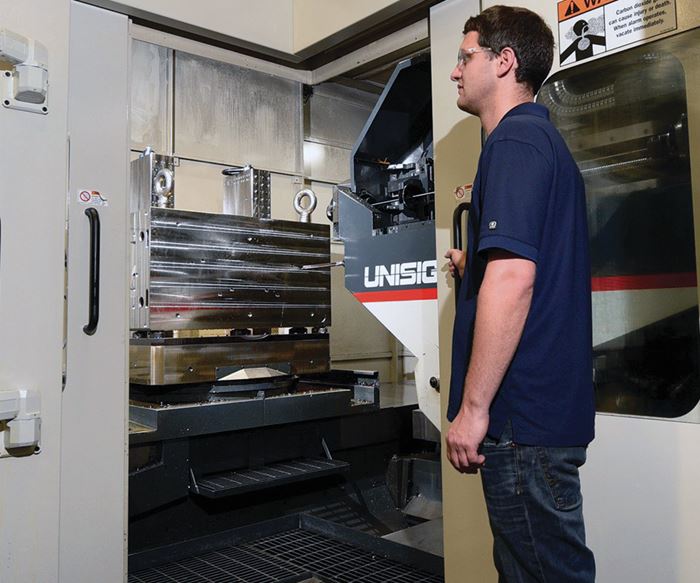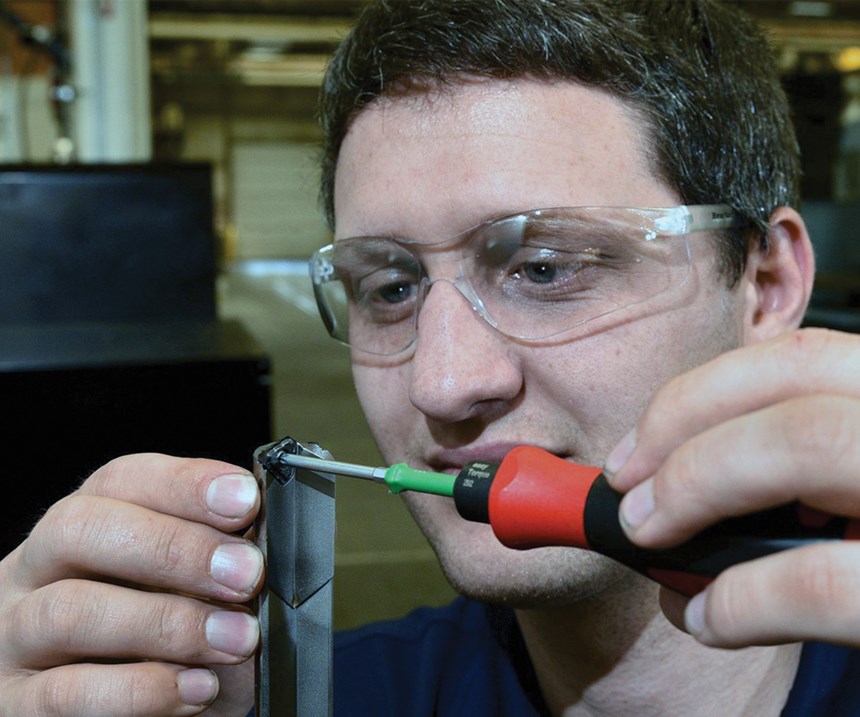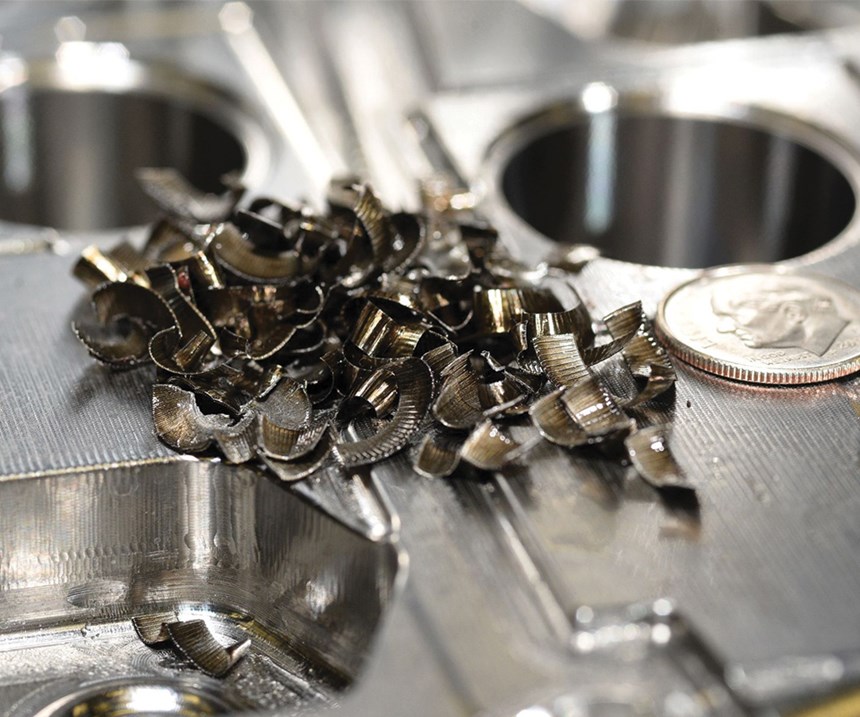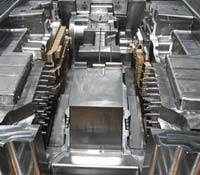Deep-Hole Drills Conquer Interrupted Cuts 60 Percent Faster
This Michigan mold shop saw significant gains in production and tool life from using a line of Ingersoll tools.
Often in plastic injection mold shops, as the deep-hole drilling goes, so goes the efficiency and profitability of the entire job. Molds and mold blocks are riddled with coolant and hydraulic lines, often crossing, all of which must be drilled with gundrills, BTA drills or other specialized tools. Holes may be 60 inches deep with depth-to-diameter ratios as large as 30-to-1. Next to hand polishing, these deep-hole operations often shape up to be the biggest production wild cards in any busy mold shop.
Not anymore at Commercial Tool and Die (CTD) in Comstock Park, Michigan. The 150-man shop running 24/5, plus regular Saturday shifts, is a supplier of injection molds to automotive OEMs and Tier-One suppliers. The company has seen significant gains in production, plus longer tool life, as a result of using Ingersoll Cutting Tool’s Deep-Trio, a family of deep-hole-drilling tools comprised of gundrills, BTA drilling heads for single-tube systems (STS) and double-tube systems (DTS), and conventional deep-hole tools.
New Machines, New Look at Tooling
CTD brought in the new tooling to optimize deep-hole drilling on three new Unisig 38 five-axis gundrill/boring mills with 120-tool toolchangers it had recently purchased. The toolchangers could accommodate extra-long, deep-hole drills, so one of the company’s goals was direct changer-to-spindle change-outs in drill size, thereby eliminating the 50-minute operator servicing required with conventional tools. “We also wanted to get away from using application-specific ‘specials,’ with their associated supply-chain issues like delivery lead times and stocking requirements,” says Darin Hall, CNC manager at CTD.
Ingersoll field engineer Chad Meyer suggested that Hall field test Ingersoll’s new line of standard Deep-Trio BTA drills and gundrills. Hall confirms that both styles of Deep-Trio tools outperformed other brands his shop tested, especially at the cross holes. “This company has never seen another gundrill handle cross holes and interrupted cuts like the Deep-Trio,” Hall says. “That’s usually the point of failure for any gundrill, and the chief reason for 100-percent operator attention.” The Deep-Trio drills went through both P20 and high-hard P20 without slowing down, creating a “chip ribbon” or rupturing on re-entry, he says. Improved process security through the cross holes reduced the operator attendance requirement and freed one worker to tend several machines.
Inscribed-Circle Inserts, Longer Guide Pads
The two keys to the Deep-Trio’s improved performance through the cross holes are an inscribed-circle (IC) insert and more extensive guide pads, Meyer says. “The inserts are free-cutting with aggressive chipbreakers and chip splitters on the cutting edge,” he says. The improved guide pad array maintains alignment when the tool is “in air,” and Meyer asserts that such optimal cutting geometries are simply not possible with the brazed-in flat-top inserts in conventional gundrills. The through-the-tool coolant system mates directly to the machine spindle’s coolant outlet, which he says eliminates separate seals and the operator servicing time required to place them when switching to a drill of a different diameter.
CTD says key benefits it realized as a result of using the Deep-Trio tools include 50-percent higher feed rates in solid, hardened P20 mold stock; higher feed rates through cross holes and other interrupted cuts; no more catastrophic failure or “ribbons of chips” at cross holes; and elimination of BTA setups, allowing for use of the toolchanger (BTA setup was 50 minutes versus a 30-second tool change). Additionally, CTD no longer requires 100-percent operator attendance. With greater process security, one operator can now tend three machines.
CTD says it also gained reliably longer cutting tool life. “The only mode of failure is gradual flank wear, as indicated by increasing spindle load,” Hall says. Meyer explains that there are several factors that contribute to this cost-saving benefit, including Ingersoll’s use of a more wear- and heat-resistant tool material and a freer-cutting geometry at the cutting edge (to create a more cleaving than scraping action). As heat is considered the enemy of any cutting tool, these tools are designed for cooler cutting, with more aggressive chipbreakers that are molded into the top face of the cutting tool insert. Heat-resistant and insulating coatings on the insert also keep the cutting edge and substrate cooler.
New Advantages, New Standards
The Deep-Trio line includes gun, STS and conventional styles, all using the same inserts in diameters from 0.630 to 1.102 inches. Shanks are stocked in 10×D 15×D and 25×D lengths. Indexable inserts, with three cutting edges and free-cutting geometries not available in brazed inserts, come in standard and chip-splitter styles. According to Ingersoll, this selection enables standard tools to cover more than 50 percent of all deep-hole drilling applications in moldmaking. CTD has standardized on the drills for all holes as deep as 22 inches and as small as 0.687 inch in diameter in plates, rails and mold blocks. Cutting fluid is oil-based.
Since it started using the Deep-Trio tools, the company says it has been achieving the results reported above with no tool ruptures or other unwelcome surprises. “Mainly, we use the gundrills on holes up to 12-to-1 and the BTA style when going beyond 72 inches. For ‘shorter’ deep holes, we use the conventional Deep-Trio tool,” Hall says.
CTD’s drills are 0.687, 0.718 and 0.944 inch in diameter, and diameter changes on the machine are achieved changer-to-spindle with no stoppages or operator servicing to swap seals and collars, Hall says. If the spindle load meter rises above about 10 percent, indicating wear at the cutting edge, the insert is indexed.
For holes deeper than 22 inches, CTD operators approach from opposite sides of the workpiece. The Deep-Trio tools stay more on center, Hall says, so alignment where the two holes meet is far better. Meyer says this is possible because the geometry of the cutting face balances the lateral forces that can cause off-line drilling. Also, longer guide pads provide more lateral support.
“All three drill types use the same inserts. Feed rates average 5 ipm in the solid and across the cross holes,” Hall says. “In the solid, that’s 60 percent faster than our previous speeds. At cross holes and other interrupted cuts where we used to slow down, that’s a four-fold improvement.”
To watch Ingersoll Cutting Tool’s Deep-Trio quickly and efficiently drill deep into 4140 steel, visit short.moldmakingtechnology.com/deeptrio.
Related Content
Moldmakers Deserve a Total Production Solution
Stability, spindle speed and software are essential consideration for your moldmaking machine tool.
Read MoreMachining Center Spindles: What You Need to Know
Why and how to research spindle technology before purchasing a machining center.
Read MoreFundamentals of Designing the Optimal Cooling System
The right mold components can help improve mold cooling and thereby produce higher-quality parts.
Read MoreTreatment and Disposal of Used Metalworking Fluids
With greater emphasis on fluid longevity and fluid recycling, it is important to remember that water-based metalworking fluids are “consumable” and have a finite life.
Read MoreRead Next
Faster Cornering in Cavity Hogging Boosts Capacity
With a cutter capable of plowing through the corners at full speed, a Michigan moldmaker says it has doubled rough-milling throughput, freeing up machine time for mechanical polishing instead of tedious handwork.
Read MoreCommercial Tool & Die: Innovation And Improvement Are Keys to Success
The company’s two mantras—customer service coupled with continuous improvement—have allowed this mold manufacturer to triumph during trying times while landing them the MoldMaking Technology 2009 Leadtime Leader Award: Large Shop for the second year in a row.
Read MoreHow to Use Strategic Planning Tools, Data to Manage the Human Side of Business
Q&A with Marion Wells, MMT EAB member and founder of Human Asset Management.
Read More


















.png;maxWidth=300;quality=90)













